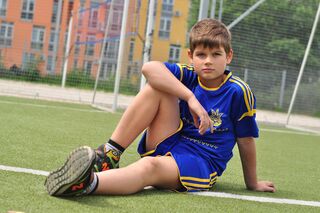Bullying
How Adult Bullying Spreads to Children
Plus, four steps to "inoculate" children and maintain their mental health.
Posted August 29, 2022 Reviewed by Devon Frye
Key points
- Adult bullying of children can have a lasting negative effect on their mental and physical health.
- Researchers find elevated levels of cortisol, depression, and memory issues in bullied children.
- Teachers who bully children, in particular, can negatively change school culture, leading to the development of more bullying.
- Adults need to take concrete steps to change a normalized culture of bullying and abuse.
In some ways, bullying is like a virus; the behavior can seem to spread from person to person—especially from adult bullies to children in their care—and it may come with lasting damage to physical and mental health, especially to its child victims. Research indicates that when a student attends a school where there is a single teacher who uses bullying tactics, for example, the culture of the whole school is negatively affected.
In a survey of more than 1,000 American teachers, researchers Molly Smith and Alan McEvoy—who himself reports being bullied by teachers and coaches as a child—found that most teachers are empathic, respectful, and sensitive to their students. However, schools often harbor at least one or two teachers who use their position of trust and power to bully. These educators humiliate, harm, threaten, or induce fear and emotional distress in students.
What is concerning is that not only do students have to cope with the abusive conduct of these kinds of teachers, but school culture across the board is also infected. McEvoy and Smith’s findings suggest that when one or two teachers are bullying, the effect is contagious. Teacher bullying influences students’ behavior, creating a widespread “harmful, discriminatory, and hostile climate in which learning is undermined and intolerance flourishes.” Indeed, it makes intuitive sense that when adults in positions of power and trust role-model bullying, children imitate them.
The Neurological Effects of Bullying on Children
Professor Tracy Vaillancourt, who specializes in school-based mental health and violence prevention, researches the impact of the stress hormone cortisol and the ways in which it impacts children’s brains. In one of her longitudinal studies, she discovered the links between “elevated cortisol, symptoms of depression, and poor memory” in students who are being bullied.
Imagine the compound effect of having mostly wonderful teachers and healthy peer interactions, yet knowing that in one class, there is going to be emotional abuse at the hands of one teacher, and that this harmful conduct could then be imitated by peers in the hallway or on the playground. Children who know or anticipate bullying and abuse can have perpetually elevated cortisol levels, which is harmful to the brain, as documented in extensive neuroscience research.
The release of cortisol is a healthy brain reaction when faced with a predator. In order to avoid being prey, our brains are designed by evolution to fight, flee, or freeze. However, when the "predator" is a teacher or peers at school, cortisol is pumping into the brain and body in repeated, harmful, unregulated ways.
Most teachers and coaches are dedicated to child health and well-being, but all it takes is a few to fill children with the kind of terror experienced when faced with a threatening predator. It sets cortisol pumping throughout the brain and body—potentially doing serious, well-documented damage.
It's not just teachers, either. Research indicates that peer victimization increases when an adult bully lives in a child's home. Vaillancourt's research indicates that the adults who bully children at home often have their own illness or psychopathology, and their harmful behavior can draw children into an intergenerational cycle of bullying.
This cycle can also occur when the abusive adult is a sports coach, a church leader, a club director, or any other adult with whom a child regularly interacts. Regardless of where it occurs, when adults are allowed to bully children in their care, the impact can be nothing short of devastating.
What Can Be Done?
In one 2016 paper on adverse childhood experiences, social workers argued: "If 20 million people were infected by a virus that caused anxiety, impulsivity, aggression, sleep problems, depression, respiratory and heart problems, vulnerability to substance abuse, antisocial and criminal behavior… and school failure, we would consider it an urgent public health crisis. Yet, in the United States alone, there are more than 20 million abused, neglected, and traumatized children vulnerable to these problems. Our society has yet to recognize this epidemic, let alone develop an immunization strategy."
They were speaking about trauma more broadly, but the point stands: The "infection" of adult bullying and the horrendous harm it can do to children is extensively documented in research. With this knowledge, we are long overdue to establish a comprehensive, effective "immunization" strategy. These 4 ideas could help get us started:

1. Educating the public.
I argue that there needs to be a massive public health campaign to educate adults—especially those in positions of power, trust, and influence over children—to become well-versed in how they can help maintain children's mental health as well as their own. The outdated stigma that makes mental health a moral issue needs to be replaced with up-to-date research that it's a complex biopsychosocial issue that has nothing to do with morality.
In the 1980s, we underwent the fitness revolution, in which individuals committed daily time and energy to their own physical health. We can do this again with a mental health revolution where individuals assume accountability for their own well-being.
2. Assessing adult mental health.
Adults could benefit from being regularly assessed for mental health issues and then undergoing intensive healing and recovery, just as they would if they had a physical disease that was contagious. If we assessed mental health yearly, as we do with our teeth and eyes, then we may be better able to get people the professional interventions they need to assist them in repair and recovery.

3. Assessing children's mental health.
Similarly, children could benefit from having their well-being assessed in childhood to determine whether they may be at heightened risk of mental health challenges. They need to be taught about psychology and neuroscience in applicable ways that support them in their childhood and assist them in maintaining health throughout their years of development. Children do best when they have a working vocabulary to express what may be happening to them, rather than resorting to inarticulate reactions such as stomachaches, headaches, anxiety, depression, or bullying.
The less helpless and more empowered children are to understand their mental health, the better. If they have time to daily learn math and geography, they have time to learn how to keep themselves safer and healthier.
4. Getting bullies the help they need.
The contagion of bullying and abuse could be better contained if perpetrators are treated with therapeutic interventions and rehabilitation, rather than outdated blaming and shaming. Victim protection comes first, of course—but if we can rehabilitate knees and hearts, it may also be possible to rehabilitate negative behavior to stop the spread of bullying and abuse.




